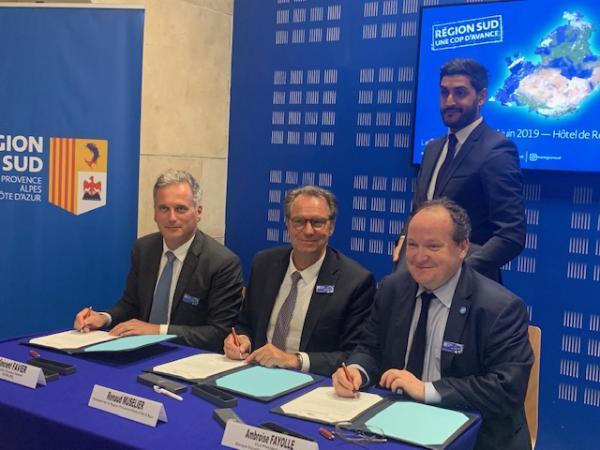
- Loan signature announced on 11 February 2019
- EUR 18 million loan over period 2019-2027
- Finance provided for projects in Marseilles and Antwerp and R&D schemes (Mini-P2R)
Ecoslops and the EIB are pleased to announce the signing of a EUR 18 million loan agreement to help finance the construction of plants in Marseilles and Antwerp. This funding will also enable the firm to push ahead with its R&D programme, especially under the mini-P2R banner, and build up its teams. The loan is being provided under the Connecting Europe Facility (CEF), aimed at fostering sustainable sea transport. It consists of two tranches of EUR 10 million and EUR 8 million.
The Marseilles project (75% ECOSLOPS, 25% TOTAL) is under construction and the loan will start being drawn down in the next few months. The plant is scheduled to open in early 2020.
In Antwerp, environmental studies are under way following the conclusion of an agreement with the ATPC refinery (VITOL Group) and the Port of Antwerp.
Mini P2R tests were carried out in the first half of 2019 and met our expectations in full. The company is now working on building the first plant with a view to on-site testing in real conditions.
EIB Vice-President Ambroise Fayolle, said:
“The EIB, the EU bank, is fully committed to backing Ecoslops, which offers an especially innovative solution to combat climate change at pan-European level, addressing a market gap by reprocessing used maritime fuel. This is also the first concrete initiative under the new Connecting Europe Facility.”
Vincent Favier, CEO of Ecoslops, added:
“Ecoslops is proud to be able to count on this EIB support for the circular economy. Our technological solution is unique on the market and it is important for us to position ourselves quickly in the most attractive ports. This is why being able to depend on EIB backing for our European projects is a major asset that will enable us to speed up our growth. Our innovation fostering the circular economy and energy transition generates industrial investment and qualified jobs. It ensures resource conservation and pollution reduction, cutting CO2 emissions by two thirds compared to traditional technologies. This proves that industry, the environment and the economy can go hand-in-hand.”